video/film
Archived Posts from this Category
Archived Posts from this Category
Posted by ben on 08 Jan 2010 | Tagged as: conceptual art, video/film, vs., wordy
Conway’s Game of Life translated into one line of APL.
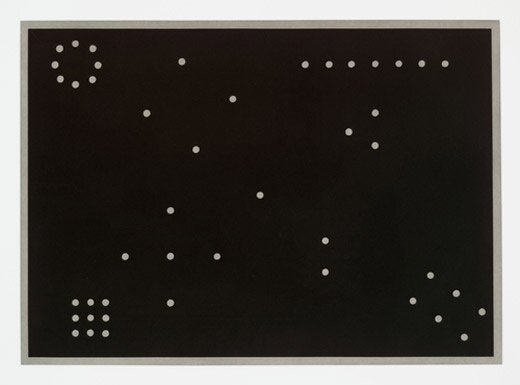
“Rules of Inference” by Mel Bochner
Posted by thomas-cummins on 21 Oct 2009 | Tagged as: upcoming events, video/film
| Thu, Oct 22 | ||
| 8:00 am | to | 10:00 am |
Bling Bling on Great Day SA!
Type:
Music/Arts – Performance
Network:
Global
Date:
Thursday, October 22, 2009
Time:
8:00am – 10:00am
Location:
KENS 5 Headquarters, 5400 Fredericksburg Road
Description
Hey Bling Bling Flingers!
Get that fuzzy, fancy, Blingy feeling a couple days early this year. Here’s two wonderful ways to promote the Bling Bling Fling masquerade gala (Oct. 24 at Artpace), the primary fundraiser for the Martinez Street Women’s Center:
1) Blare the KENS5 Great Day SA morning show at your home/office on Thurs. Oct. 22. We’re not sure exactly what time, but there will be about 5 minutes of awesomeness from 9-10 a.m., courtesy of the Current’s Sarah Fisch, Kiss FM’s Quinn and the hot hoopers. Invite whoever you know that has $25 to burn to a coffee break and watch it.
2) Come be in the audience with us for this very special Great Day SA appearance. We want a lot of happy, smiling masked faces hooting and hollering whenever the camera pans to the audience. This way, people at home will think, ‘if they’re having this much fun on a Thursday morning, Saturday night will be amazing!’
Let us know if you can be in the audience. We’d love to see you there. Location: 5400 Fredericksburg Road.
Posted by thomas-cummins on 10 Sep 2009 | Tagged as: architecture, graffiti, video/film
This is kinda old but looking at Justin’s slide show of Berlin graffiti wanted me to check it out again. I found the Berlin murals being made but my favorite is still the one posted below. It is an interesting glimpse into the possible legacy of William Kentridge.
Posted by aaron on 17 Jun 2009 | Tagged as: adventure day, art paparazzi, celebrity sightings, music, party photos, photography, rock!, video/film
No audio. Play simultaneously for best effect.
Galactic Center of Milky Way Rises over Texas Star Party from William Castleman.
Brooklyn’s Stars Like Fleas (featuring SA-town homeboy Ryan Sawyer on drums and lead beard) play a PopRally event at MOMA on June 8, 2009 – shot and edited by Austin Rhodes.
[hattips to albert flores & cosmo inserra for the first and ryan sawyer for the second.]
Posted by ben on 20 Apr 2009 | Tagged as: architecture, arts organizations, celebrations, performance art, public art, r.i.p., video/film
When I was working on my first art review back in 2006, I saw a version of Edgar Arceneaux’s video “Old Man Hill” at the Artpace potluck that launched his residency there. The residency project (which later wound up in the Whitney Biennial) wasn’t as impressive as this simple homage to a man he never met: his father’s father. Arceneaux spelled out the only thing he ever knew about this man — that he was called “Old Man Hill” — in silver balloons, which hovered over the war-torn hills of Sarajevo. One by one the balloons released and twisted toward the sky. The cameras followed the balloons wistfully, clinging to these insubstantial forms seeking oblivion. Occasionally the cameras cut to people going about their lives in the city below, people looking away from these hills with their burned out buildings and piles of rubble.
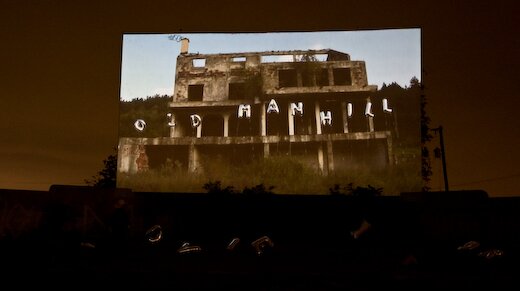
Linda Pace, who had not yet embarked on her battle with cancer, purchased this piece for her collection. Other than that potluck, the video had never been shown publicly; but before she died, Linda asked that it be screened at a special time, with the artist present. The Linda Pace Foundation arranged to screen the final version of this video for Linda’s birthday, last Thursday. Arceneaux was flown in to stage a performance along with the screening. The site selected for the project was the Mission Drive-In, a once-popular drive-in theater now dilapidated, graffiti-strewn, and slated for destruction. (It will be replaced with a new public library).
The evening of the event was overcast, windy, threatening rain. We got there early, and wandered around the old drive-in, its pavement giving way to grass, but its screens still fully intact. One by one, silver balloons were filled up and placed in front of the main screen, spelling out words that were unfamiliar to us, apparently a translation of “Old Man Hill” into Serbian Bosnian.
The translation of words hinted at another translation: the bombed-out hills of Sarajevo where snipers once found cover were translated into a theater in San Antonio, equally desolate, undergoing a wholly other kind of violence. This isn’t to equate the devestation of war to the disappearance of a drive-in, but to translate loss between cultures. Nearby the old theater, the Mission San Jose holds memories of a violence closer to that of Sarajevo: genocide, slavery, subjugation. But to most of us living in San Antonio today, the loss of place is felt more fully than the tragic, large-scale loss of life experienced by those who lived in Sarajevo in the 1990s or San Antonio in the 1700s. The slow erosion of the identities of our cities happens to be the kind of loss we are stuggling with now, the loss that we still don’t quite know how to grapple with.
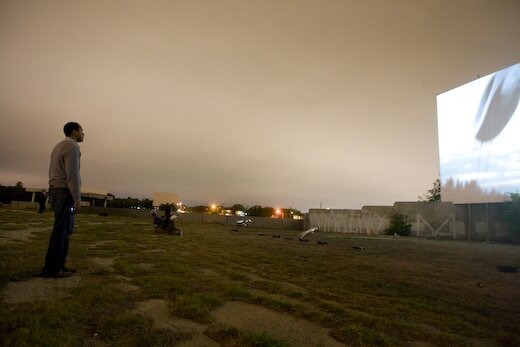
Eventually, as it grew dark, Arceneaux introduced the video, speaking of his search to learn something of his grandfather, a man neither he nor his father ever knew. This was a search to connect his identity to something larger, something more historically rooted. He spoke of his brief relationship with Linda Pace, who worked to create places in San Antonio that connect to what came before them: an old car dealership downtown becomes an artist residency space. This is the act of translating place — it doesn’t make sense to have car dealerships downtown anymore, but these spaces can be translated into something that is meaningful today, that turns loss and emptiness into another kind of value.
The video started, and as we watched Old Man Hill float away into the hills of Sarajevo, we also watched indecipherable words from another place float away into the San Antonio night, sometimes brushing slightly against the aging screen. And even as they disappeared from view, these words became embued with meaning. This was the final screening at the Mission Drive-In.
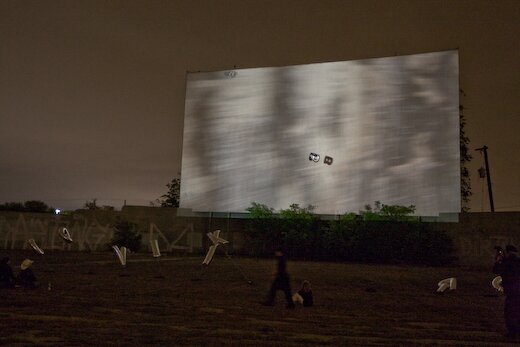
(Photos by Justin Parr, courtesy Linda Pace Foundation)
UPDATE: I’m honored to have Devin King respond to this in the second post on his new blog, Dancing Young Men From High Windows. Hopefully I’ll have time to respond to his post soon, but in the meantime I’ll point yall that way for an interesting reaction.
Posted by thomas-cummins on 11 Mar 2009 | Tagged as: upcoming events, video/film
| Tue, Mar 17 | ||
| 8:00 pm | to | 10:00 pm |
SlabCinema will be Tuesday night screenings at La Tuna this spring while we wait for Movies by Moonlight to start (June-August). Showtime is 8 p.m. Bring your own chairs or blankets.
March 17
Brother from Another Planet (1984)
A black visitor from another planet impresses most of the people he meets because he doesn’t say a word and lets them do all the talking! Directed by John Sayles
| The Brother from Another Planet | |
 Theatrical poster |
|
| Directed by | John Sayles |
|---|---|
| Produced by | Peggy Rajski Maggie Renzi |
| Written by | John Sayles |
| Starring |
Joe Morton Darryl Edwards Steve James Bill Cobbs David Strathairn |
| Music by |
Mason Daring John Sayles Denzil Botus |
| Cinematography | Ernest R. Dickerson |
| Editing by | John Sayles |
| Distributed by | Cinecom Pictures |
| Release date(s) | September 7, 1984 |
| Running time | 109 minutes |
| Country | United States |
| Language | English |
| IMDb • Allmovie | |
The Brother from Another Planet (1984) is a film written, directed and edited by John Sayles.[1]
Contents[hide] |
//
if (window.showTocToggle) { var tocShowText = "show"; var tocHideText = "hide"; showTocToggle(); }
//]]>
Joe Morton stars in this dramatic comedy, set in New York City in the early 1980s, as “The Brother,” an alien and escaped slave who, while fleeing “Another Planet,” has crash-landed in Upper New York Harbor.
Picked up as homeless, he is deposited in Harlem. The sweet-natured and honest Brother looks like any other black man, except that he is mute and – although other characters in the film never see them – his feet each have three large toes. The Brother has telekinetic powers but, unable to speak, he struggles to express himself and adjust to his new surroundings, including a stint in the Job Corps at a video arcade in Manhattan.
He is chased by two white Men in Black (David Strathairn and director Sayles himself); Sayles’s twist on the Men in Black concept is that instead of government agents trying to cover up alien activity, Sayles’s Men in Black are also aliens, out to re-capture “The Brother” and other escaped slaves and bring them back to their home planet. Unlike the many human characters in this film, the aliens themselves are oblivious of skin color, and screenwriter Sayles has one of the Men in Black utter an epithet “Three Toe” when describing their quarry, in attempt to prove that skin color is just as arbitrary as number of toes or any other human characteristic that would make one different from another.
|
[hide]
Films directed by John Sayles |
|
|---|---|
|
Return of the Secaucus 7 • Lianna • Baby It’s You • The Brother from Another Planet • Matewan • Eight Men Out • City of Hope • Passion Fish • |
|
Posted by thomas-cummins on 09 Mar 2009 | Tagged as: opportunities, video/film
I don’t know what you win but there’s a San Antonio contest for film makers at safilm.com.
Posted by thomas-cummins on 12 Feb 2009 | Tagged as: politics, responses/reviews, video/film
It’s Oscar time. Just saw the award-winning film “The Reader” and was pleasantly surprised by how good this movie actually is. It’s about inherited guilt of the Holocaust, interpersonal relationships, and as the screenwriter so eloquently put it – “It’s about literature as a powerful means of communication, and at other times as a substitute for communication.” The movie garnered 5 Oscar nominations (including Best Picture) and Kate Winslet is definitely deserving of her front-runner status as Best Actress in her portrayal of an S S guard who seduces a teenage boy.
It’s this portayal, though, that some criticize as being unsympathetic to the Holocaust. The film is immersed in German philosophy and it’s hard for me not to draw references to Hannah Arendt – a German Jew who similarly had an affair with an older Nazi in the form of her teacher Martin Heidegger. In Arendt’s own book on Adolf Eichmann, she coined the term “the banality of evil” when she frighteningly observed how ‘normal’ most Nazis actually were and the need to conform to the social environment, no matter how wrong it might be, is one of the most defining aspects of the human condition. This phenomenon has been shown again and again in subsequent cases like the Stanford prison experiment, the Milgram experiment, the Hofling hospital experiment, the Asch conformity experiments, The Third Wave, Abu Ghraib Prison, as well as in cults everywhere. It’s impossible for a person to step out of their Zeitgeist no matter how hard they try and, indeed, this is the ultimate struggle in the individual (and artist) – between authenticity to him/her own self versus placing him/herself within the social norms of the time.
It’s too easy, though, to sweep Holocaust horrors under the rug by Otherizing historical figures of the past and we need to look at ourselves to find the common denominator in genocide which pervades our history but which still continues to this day. It’s time to stop finger-pointing and go beyond simplistic terms like good and evil. This, however, doesn’t excuse Holocaust deniers in the news today like Bishop Richard Williamson but shows, rather, how very real genocide is. I’m always stunned by how beautiful Hitler’s art actually was and am compelled to refer back to the interesting film ‘Max‘ which poses the question – What would of happened if Hitler’s early career as an artist was accepted by his society?
.
Posted by thomas-cummins on 06 Feb 2009 | Tagged as: celebrity sightings, video/film
Randomly found a reception last night for a film festival that’s going on this weekend at the Guadalupe Theater. Here’s their website if you’re down for chillin’ out with some movies. Might be 1 or 2 celebrities.
Posted by thomas-cummins on 20 Jan 2009 | Tagged as: design, video/film
The above image is an optical illusion sometimes referred to as the Lilac Chaser. It’s the result of several different known visual phenomena including:
Negative Afterimage – The everyday experience we have when we see something very bright and then continue to see its floating silhouette even after we look away from it. The neutral gray background seen here works to enhance this effect and this interactive site allows you to change the dot’s color to see opposing ghost colors.
Troxler’s Fading – First discovered in 1804 by Ignaz Troxler. Basically, we have a blind spot in the middle of our vision (called Scotoma) but we constantly make up for it by having two eyes, rapid eye movement, and also a brain that fills-in the missing information. Unvarying stimuli, however, is able to escape our focus. Similarly, we may feel our clothes when we first put them on but we soon forget about them even though they are still probably touching millions of neurons on our skin right now. A similar illusion is seen below and you can also test your blind spot at this website.
Posted by ben on 16 Jan 2009 | Tagged as: intellectual property, politics, video/film
Nate Anderson at Ars Technica covers what is probably the best cause célèbre I’ve seen for oponents of restrictive copyright enforcement. The article recounts the case of Kevin Lee, a prolific film blogger who used YouTube extensively to publish “video essays” which interspersed his own critical insights with short film clips. Lee’s work demonstrates everything that’s good and noble about the Internet: an unpaid blogger pioneering new avenues of critical discourse, just to share his love of cinema with others. His blog, Shooting Down Pictures, reveals a passionate, intelligent observer documenting his travels through the greatest 1,000 films. Read more about the significance of Lee’s work at The House Next Door.
But all this came to a grinding halt when, after a third DMCA takedown notice was served against Lee, over five hours of his critical commentary was deleted by YouTube and his account closed. I’ve written about what I see as some helpful innovations on YouTube’s part in dealing with copyright, but this “three strikes” rule is absurd on its face. YouTube offers some fair objections to the idea that it should manually review all of these takedown notices, but deleting whole user accounts due to a small ammount of allegedly infringing content is bad for YouTube, bad for free speech, and will ultimately feed the backlash against copyright in general. It’s not even clear that the video that triggered the account deletion was violating copyright; Lee has a strong case that his critical videos fall under fair use protections.
The blame for this doesn’t fall entirely on YouTube, as many of the large rights holders are taking a “shoot first, ask questions later” stance with takedown notices, and of course the DMCA itself encourages this behavior. Any lasting solution will involve a combination of legal reform and consumers creating a shitstorm whenever something like this happens.
[Cross-posted at Scattered Work]
Posted by ben on 13 Jan 2009 | Tagged as: arts organizations, comics, design, video/film
Paul Richards’ article in the Washington Post advocating for a Disney-based museum show has inspired some interesting responses around the blogosphere. Greg Allen makes a plausible case that it’s nothing more than “a fanboi/critic [trying] to turn some offhand party chatter about the worst show ever into a mouse-eared museum manifesto.” Kriston Capps, in a more even-keeled post gets a bit closer to what I see as the real problem with the idea:
To admit Disney would be to open up a massive new genealogy in visual art that includes all the things that are visual but aren’t called art. So it wouldn’t be Disney and Murakami or Disney and younger fine artists but Disney and the makers of Final Fantasy or Disney and the Coca Cola designers. That might all be defensible, but it would get very confusing very quickly.
Just because something is important does not make it visual art and at the end of the day, just because something is visual art does not mean that it is represents the most important visual thing. Rather this notion of visual art you find at museums offers a streamlined conversation within visual culture, one that (one hopes) influences and is influenced by other conversations in the broader culture. But museums cannot hope to archive all those other conversations, too.
But I think it’s not just a question of what is deemed visual art or what is deemed important. The issue comes down to a more practical question of access. Museums allow us to see genuine, rare works of art from a field that was founded on prizing the unique object. When you start to show Mickey Mouse cartoons, interesting and important as they may be to visual culture, you’re showing people things they can already see in the comfort of their homes. It’s not that the material is inappropriate for the museum, but that museum treatment isn’t necessary. Without the museum, many of us would never get to see a Frank Stella except as a reproduction; but if all the museums in the world disappeared, we could still participate in the visual culture of cinema, more or less in the way it was intended to be viewed.
Maybe we’re past the point where we refuse to consider Disney or Alfred Hitchcock or Matt Groening to be “real artists,” but that doesn’t mean that the public would be well-served by seeing their work in museums.
Posted by thomas-cummins on 12 Jan 2009 | Tagged as: celebrity sightings, video/film
Did anyone catch Jeff Koons‘ cameo in Gus Van Sant’s highly recommended film ‘Milk‘? His screen time was only about four minutes as San Francisco politician Art Agnos but it was interesting to see Koons actually kinda hold his own against such heavyweight actors as Josh Brolin, Emile Hirsch, James Franco, Diego Luna, and, of course, Sean Penn. It’s his first featured film (with his clothes on at least) and I’m wondering if this is a new direction for him or how exactly he got the role. I’ve googled around and nothing really comes up. Please comment below if you have any inside info. Oh, did anyone see ‘Maniac Nurses Find Ecstasy’? – it’s listed on his IMDb page.
Posted by ben on 06 Dec 2008 | Tagged as: responses/reviews, video/film
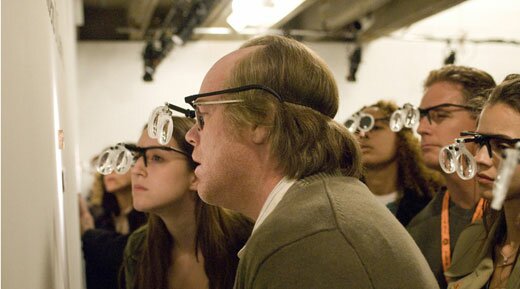
Many of the online discussions and reviews of Synecdoche, New York revolve around the perceived, and self-perceived, intelligence of the viewer. For those who like the movie, the critics who panned it are either too stupid to understand it, or too self-regarding to admit that it affected them. Others attack the admirers for feigning approval only demonstrate their own sophistication. These discussions reveal a lot about the problems with Charlie Kaufman’s latest navel-gazer.
First of all, let’s be clear about this: Synecdoche, New York is not a cinematic game-changer, as some have claimed. It’s fairly original, but is also very much a part of the meta-narrative tradition that stretches from Don Quixote to Inland Empire. “Woody Allen meets David Lynch” encapsulates the movie better than most X meets Y comparisons. Synecdoche doesn’t quite reach the wittiness of Woody Allen’s best work nor the ambitious narrative complexity of late David Lynch; but it’s kind of cool that someone tried to merge the clever, self-absorbed, hypochondriac artist with the non-linear, destabilized, semi-narrative form. What we end up with is a movie that is at turns poignant, funny, cliché and tedious.
Many reviewers agree that after about 45 minutes to an hour, the movie starts drifting and becomes tiresome. People said the same thing about Inland Empire, but Lynch does a better job of maintaining a sense of interpersonal tension, which combines with his consistently powerful cinematography to create enthralling scenes long after the overall narrative has shattered. The result is that as Lynch destabilizes the identities of his characters, they become more intriguing and perhaps more deeply human; as Kaufman does it, they become flatter and more cartoonish. There are some strong scenes late in Synecdoche, New York, but they are harder to come by as the characters are drained of emotional weight.
Charlie Kaufman invested a lot of energy in making this movie clever. Puns and double entendres abound, it’s a surrealism that makes fun of itself, but also takes itself seriously. It’s a fine line that at points Kaufman can’t quite toe, and the characters suffer for it. But the attempt is ambitious enough to make a certain segment of the movie-going public really want to believe that he did pull it off. It’s tempting for these people to assume that Synecdoche’s critics just don’t get it. On the other hand, it’s tempting for those same critics to accuse those who praise it of just being glad to be able to use the word synecdoche in casual conversation, and giggle at the high-minded puns. This cleverness is at once redeeming, as Kaufman is essentially making fun of himself, but also a roadblock to discussion, as people get hung up on the cleverness of the thing and forget to talk about its underlying meaning.
Posted by michelle on 30 Oct 2008 | Tagged as: image & sound, video/film
Posted by michelle on 09 Oct 2008 | Tagged as: announcements, upcoming events, video/film
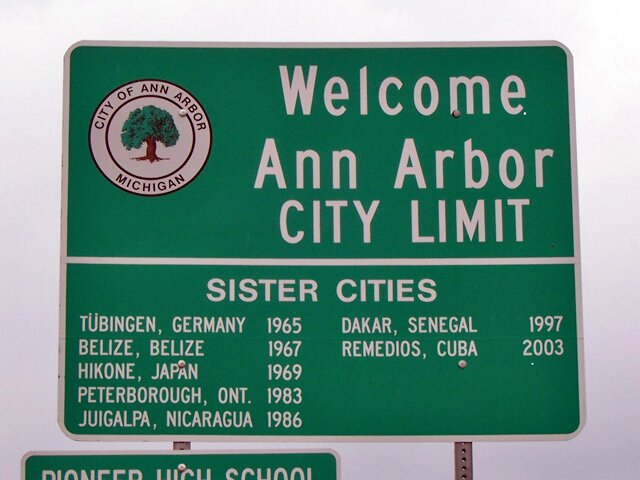
Just a reminder, you can go see the oldest experimental film festival in America for FREE tonight. And given the days economic doom report, seems like a good idea to sit in a dark theater and contemplate contemporary art through new media/rose colored glasses. It’s at the Downtown UTSA Campus. Highly recommend carpooling or bicycling to this event.
Posted by ben on 16 Sep 2008 | Tagged as: books, essays, silliness, video/film
In an essay from , Luis Buñuel, while arguing that gin stimulates the imagination, explains how he came to use two actresses to play a single role in his final film:
If I had to list all the benefits of alcohol, it would be endless. In 1977, in Madrid, when I was in despair after a tempestuous argument with an actress who’d brought the shooting of to a halt, the producer, Serge Silberman, decided to abandon the film altogether. The considerable financial loss was depressing us both until one evening, when we were drowning our sorrows in a bar, I suddenly had the idea (after two dry martinis) of using two actresses in the same role, a tactic that had never been tried before. Although I made the suggestion as a joke, Silberman loved it, and the film was saved. Once again, the combination of bar and gin proved ubeatable.
Posted by ben on 14 Aug 2008 | Tagged as: announcements, ice, video/film
I saw Werner Herzog’s new movie, Encounters at the End of the World, last night. I’ll just say briefly that this is one of the funniest movies I’ve caught in a while, despite the fact that it’s a documentary about Antarctica. Herzog displays his usual keen eye, sense of levity with weighty subjects, and managed to pull off another great soundtrack (Henry Kaiser plays much of the music, and also did the underwater cinematography).
For those of you in San Anto, today is the last day it shows at the Bijou, so try to check it if you can.
Posted by ben on 13 Aug 2008 | Tagged as: politics, public art, responses/reviews, video/film

There’s been some grumbling lately about the “fake fireworks” at the Olympics in Beijing. Here’s how the story goes: the people responsible for planning the fireworks developed a display that would outline 29 footprints in fireworks from Tiananmen Square to the Bird’s Nest stadium. Due to the grandiose nature of this display, no single person would be able to see it all — not even from a helicopter. So the special effects team spent a year developing a CGI version of the footprints, made to look as if a helicopter were flying along the route filming it live (including a shaky camera and digitally generated Beijing smog). This video was inserted into the “live” broadcast stream sent to TV networks worldwide, and shown within the stadium itself. No disclaimer was ammended to the video, so audiences thought they were watching “actual” fireworks. When the truth was revealed, many viewers became upset at the deception.
There are so many implications to this I don’t think I can really unpack it all here, but I’ll give it a try. To begin with, we have the notion of authenticity. This July article from the New York Times helps explain the the gap between Chinese and Western relationships with authenticity. (Most of the relevant discussion comes on the last page of the article, e.g.: “it is common practice [to] substitute copies of famous works of art in museums when the originals are unavailable.”) The fireworks actually happened, but to give an impression of the true scope of the display, some cinematic sleight-of-hand was necessary. Here’s a video someone shot of the — not so impressive. The idea here was not to embellish reality, but to give viewers some sense of a reality they couldn’t fully experience. A disclaimer would in some sense rob viewers of the experience as well: perhaps ironically, the closest a viewer could get to experiencing the full display was to watch a CGI version of it thinking it was authentic. But, for a Westerner, that won’t do. If our experience of a thing must be partial in order for it to be real, so be it, even if that “reality” is only through the TV screen. We’d rather watch a video of part of the display, and then read about how it stretched across Beijing, than to see a simulation of the whole thing.
I’m sure it would be possible to go on for a few thousand more words on the ideas of authenticity that this brings to the fore (sprinkling in some appropriate snippets of Baudrillard, of course), but let’s move on. What was the point of this display? In the West, Tiananmen Square is largely associated with the Tiananmen Square Massacre, but its history is a comprised of a long string of political and military conflicts. Symbolically, it can be seen as the seat of political power in China, stretching back to the Ming Dynasty. These footprints, walking from the site of battles, protests, massacres, and Mao Zedong’s proclamation of the People’s Republic of China in 1949, to the site of the Olympics, represent China’s lurching entry into the capitalist global economy.
China is stuck in a precarious position with the West: it constantly signals that it wants to engage as political equal with the US and the EU, but cannot bring itself to uphold even the inconsistently enforced standards of human rights cherished by the West. As noted in the Sky News article linked above, the architect who designed the Bird’s Nest stadium recently wrote on his blog about the Beijing Olympics:
He was directly critical of China’s ruling communist party, characterising the ceremony as “a showcase of the reincarnation of the Marxist imperialism; the ultimate paragon of an all embracing culture of fascist totalitarianism; an encyclopaedia that encompasses total defeat in intellectual spirit.”
Perhaps the Chinese relationship with authenticity is indicative of a deeper disconnect between the Chinese and Western understanding of the world. Even in its symbolization of a movement towards Western values, China has managed to offend.
UPDATE: Oh yeah, and then there’s this.
Posted by michelle on 12 Aug 2008 | Tagged as: video/film

How is it that in a city of approximately 1.2 million people, not one single theater is screening Man on Wire? What’s up, Crossroads? Alamo Draft House?
UPDATE: Man on Wire will be showing at the Bijou at Crossroads. Apparently, there is just a delay in screenings of good movies in San Antonio. Also, The McNay will be showing some awesome films this fall. I’ll keep you posted!
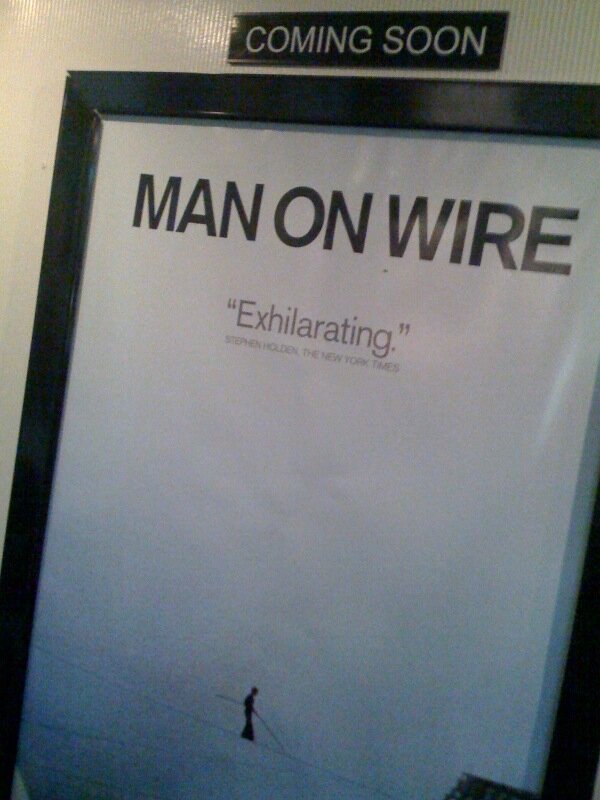
Thanks for sending me the photo, Beto!
Posted by ben on 27 Jul 2008 | Tagged as: art paparazzi, design, party photos, performance art, public art, silliness, video/film
Emvergeoning’s exclusive footage from the 2008 Pushcart Derby:
Posted by justin on 21 Jul 2008 | Tagged as: art + bikes, art paparazzi, image & sound, performance art, photography, renegade performances, video/film
Posted by ben on 10 Jul 2008 | Tagged as: music, performance art, r.i.p., rock!, video/film
I just learned that Bruce Connor died on Tuesday. Here’s a wonderful little film he made in 1966 featuring the dancing of Toni Basil (aka Antonia Christina Basilotta) and the music of Ed Cobb (NSFW — there are a few nude shots):